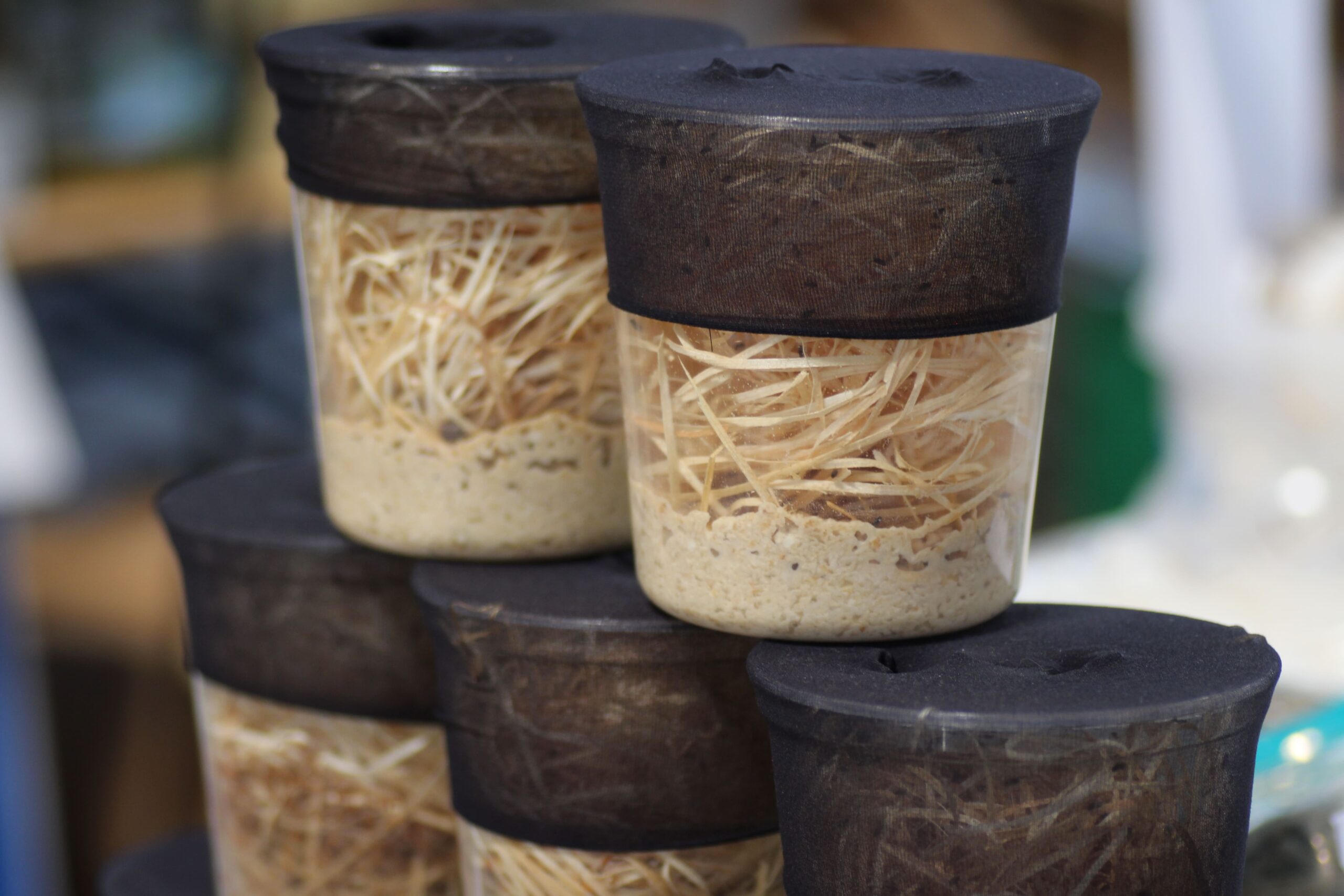General Information:
Drosophila hydei is the second relevant species in terraristics. It grows with about 3 to 4 mm slightly larger than the Drosophila melanogaster. But the development time clearly increases – as always it is strongly temperature-dependent. Approximately a generation sequence of about 3 weeks can be expected.
Breeding:
The breeding of these animals is very simple and compared to other animals very inexpensive. I use washable glass containers or plastic containers of 500-1000 ml content for the breeding. I then fill in the breeding substrate approx. 3 cm high. As a running space I use substrate wood wool, egg cartons, crumpled paper or paper strips from the shredder. Usually I occupied the new breeding boxes with 20-40 flies, so that a fast larvae stocking occurs. I do not heat the fruit fly breeding extra but keep it at normal room temperature.
So you should keep the breeding preparations a bit warmer and the containers with the hatched animals a bit cooler to increase the life span. It is best to observe the laying of the eggs shortly after the cultures have started, when the larvae do not disturb yet. The eggs are preferably laid on the surface of the sutrate ground. The development time depends on the temperature.
During larval development, the animals moult twice. The length of the animals increases. The larvae dig themselves into the ground. To pupate, they usually leave surface and migrate up the wall of the breeding tank.

Buy Cheap Flightless Drosophila hydei
✓ Best Quality
✓ Different ages availabke
✓ Fertile and vital animals
Visit ShopSubstrate Mush:
Drosophila larvae feed on yeasts. The substrate must offer favourable growth conditions for yeast fungi. It should be solid so that nothing flows out when the vessel is turned around. However, the larvae must be able to drill into the substrate.
Recipe for a breeding container in summer:
Feeding other Animals with Drosophilas:
Of course you could go to the wardrobe of your wife or girlfriend to “borrow” a pair of tights. With this you can build many bridges from the breeding cup to the insectarium. However, mine would usually still break out and tights are much too expensive in the long run, especially if you get the wrong ones. The resulting trouble with the opposite sex can easily be avoided by simply putting the breeding cups in the fridge for a few minutes. Then you can open the can, knock the animals out and even dust them with a vitamin preparation (Korvimin ZVT). The fruit flies are in a cold state for a short time that does not harm them, their eggs or larvae.

Buy Cheap Flightless Drosophila hydei


